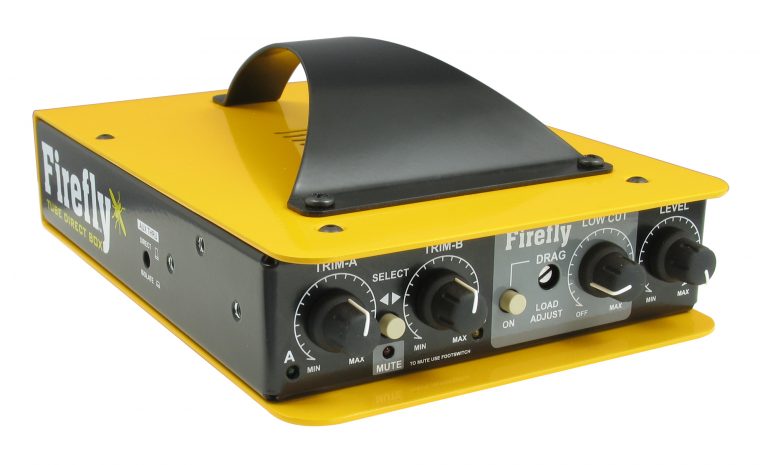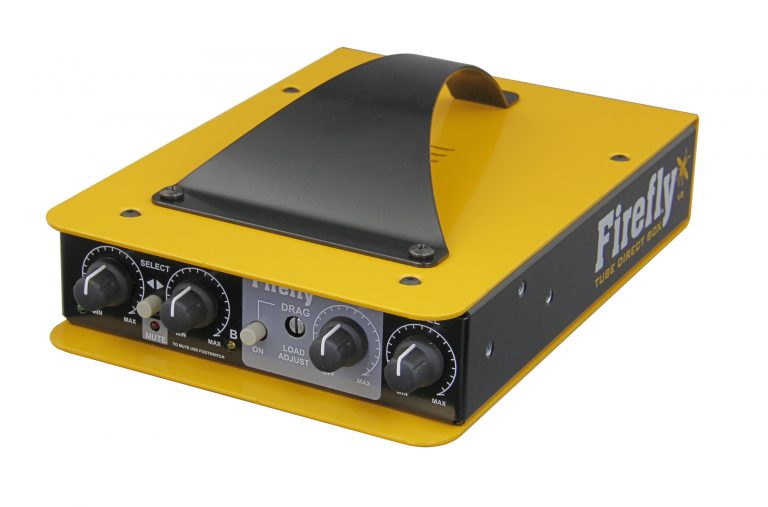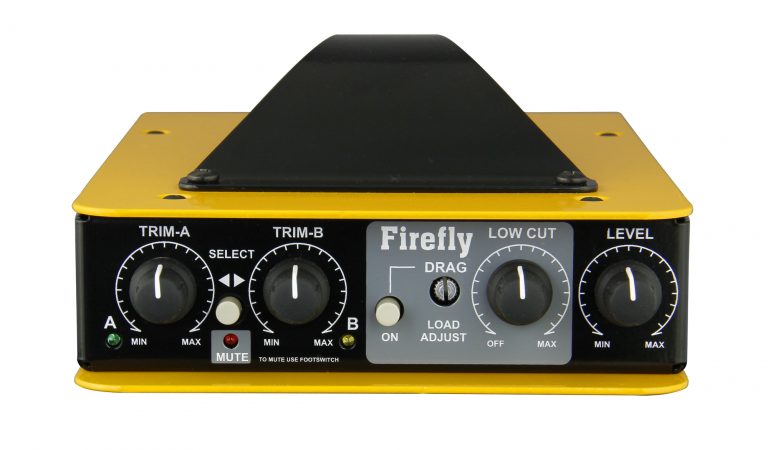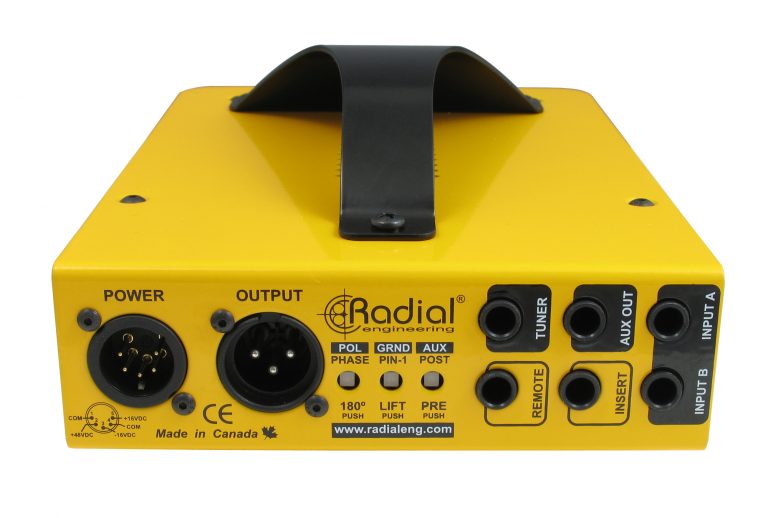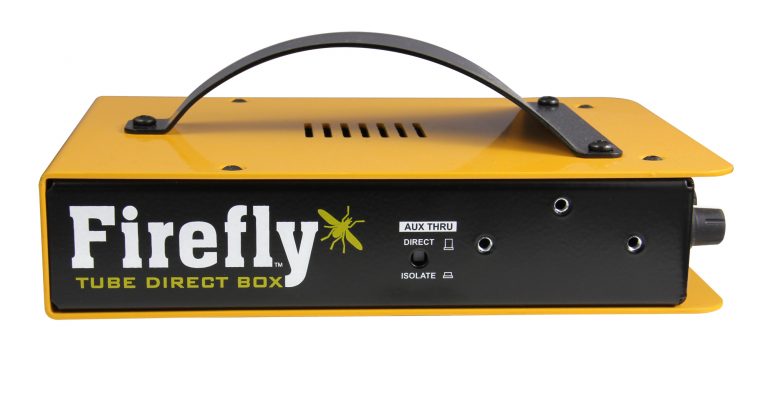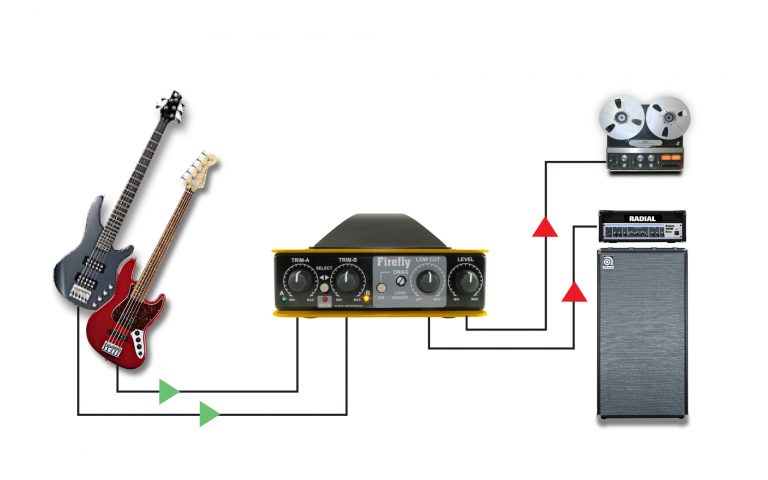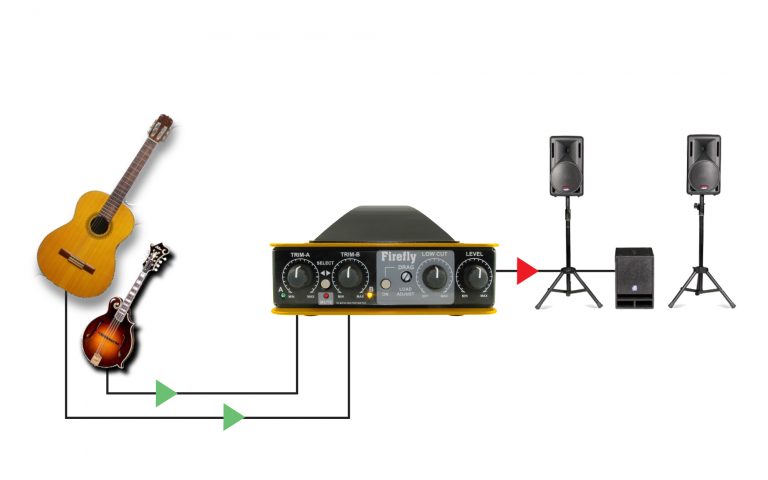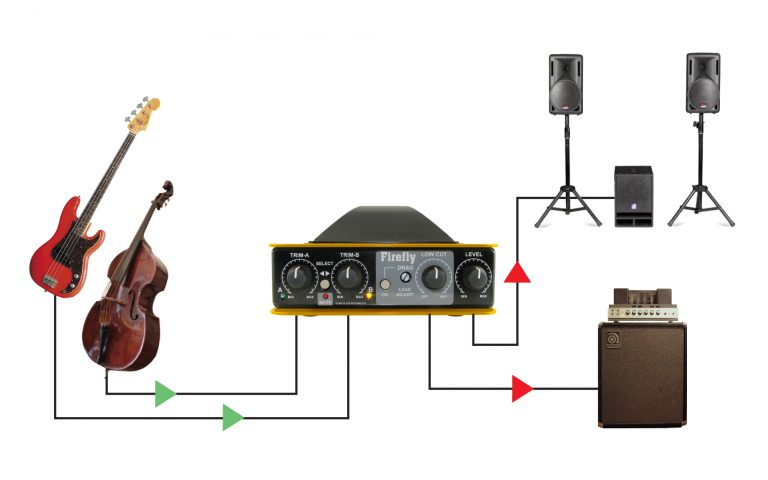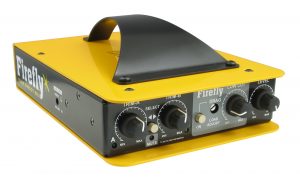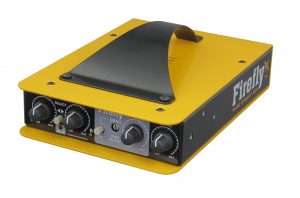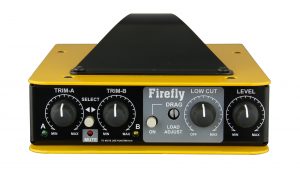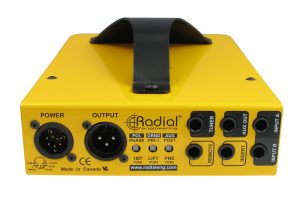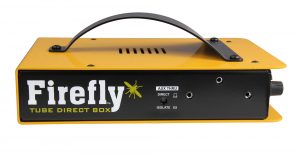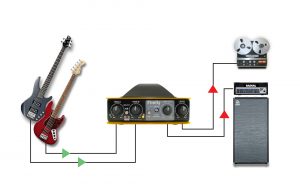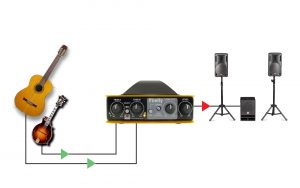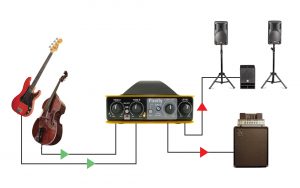If you don't see the question you had in mind here, feel free to enter in the form provided along with your email address so we may send the reply directly to you. Thanks for your participation!
What brand of tube comes with the Firefly?
The Firefly comes with a standard Ruby Tube 12AX7.
Will changing the tube make a difference?
Yes. Each tube will deliver more or less noise and varying character. If you choose to change the tube, just be careful to ease it out of the socket.
How does the sound of the Firefly compare to the Radial JDV?
Both share the same class-A, zero negative feedback input circuit. The JDV employs a solid state drive while the Firefly employs a tube and transformer. The JDV will be cleaner sounding while the Firefly will introduce more character. Both are terrific in their own right.
Does the Firefly require venting when rack-mounted?
No. The optional L brackets are designed to provide sufficient air flow on the sides to allow the chassis to dissipate heat. In fact the temperature of the 12AX7 tube is so low that venting is not really required.
When I travel abroad, can the Firefly be used in different countries?
The Firefly comes with a mid cable brick power supply. On one end is the 4 pin XLR that connects to the Firefly and on the other, a standard 3-pin IEC cable. As the power supply will handle any input from 100 Volts to 240 volts, you need merely change the IEC cable to suit the local electrical outlet standard.
How can I mute the Firefly if I do not have the JR2 footswitch?
The mute function only works when using the footswitch.
How long of a cable can I run out of the Firefly?
The ¼” AUX out that is usually used to feed a guitar or bass amp is buffered and able to drive a coaxial cable about 15 meters (50 feet) before you will notice any appreciable noise. The Balanced XLR cable can easily drive 100 meters (250 feet) of cable or more.
Can you explain Drag Control?
When a guitar pickup is buffered, the relationship between the guitar, the cable and the amplifier is lost. Drag Control load correction lets you reintroduce the load on the pickup as if connected directly to a tube amplifier. It ends up sounding and feeling more natural.
How do I turn off the high-pass filter?
There is no turn off switch. You simply turn the knob all the way counter-clockwise to dial it out. The cut-off frequency at that point is about 5Hz which is well below the threshold of human hearing.
Why is there no power switch on the Firefly?
There is simply no space left for a power switch. Just plug it in to turn it on.
How long do I have to wait to allow the tube to warm up?
About 15 minutes will allow the tube to stabilize and deliver the best tone.
Can I power the Firefly using 48V phantom power?
No. The Firefly requires a significant amount of voltage and current to make it work. This is well beyond what phantom power can deliver.
If I leave phantom power on, will it harm the Firefly?
No. The Firefly is equipped with a transformer and blocking capacitors at the output which will block 48V DC phantom power from entering the Firefly’s XLR connector.
Can I blend the two inputs on the Firefly?
No. It is not designed to do so. The Radial PZ-Pre is however designed to do this.
Traditional DI boxes have a microphone level output and require a microphone preamplifier when plugging into a PA system or digital audio workstation, is this the same for the Firefly?
No. The XLR output on the Firefly will offer a range from mic level to line level by simply adjusting the master ‘LEVEL’ on the Firefly as required. In other words, by turning the LEVEL control clockwise you can achieve a line level output (up to +22dB) and bypass the need for a microphone preamplifier when connected to a PA system or line input on an audio interface.
Which active DI box would you recommend for recording an Archtop Guitar with stock Gibson humbuckers?
As magnetic pickups react to the input impedance, the best choice would be a Radial DI that is equipped with Drag control. Options includes the Firefly Tube direct, the JDV class-A direct and several others.
How often do I need to change the tube in the Firefly?
When run at moderate levels, tubes can last for 20 years! If you notice loss of signal level or degradation in the sound quality, those are good indicators that it is time to change the tube.

